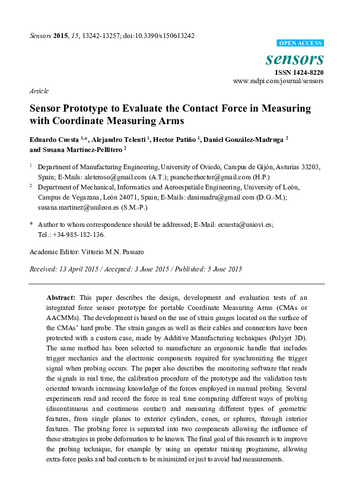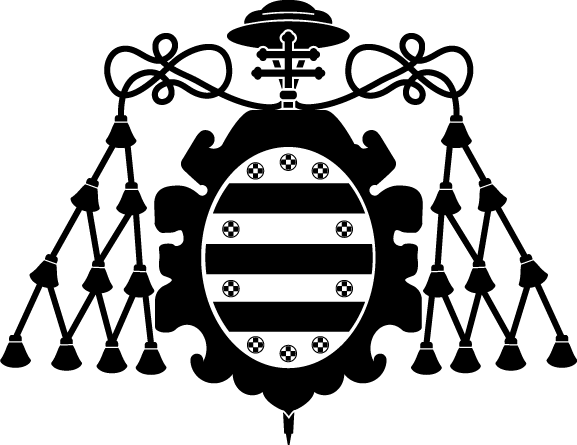Sensor prototype to evaluate the contact force in measuring with coordinate measuring arms
Autor(es) y otros:
Palabra(s) clave:
Coordinate measuring arm (AACMM; CMA)
Contact force sensor
Probing control
Fecha de publicación:
Editorial:
MDPI
Versión del editor:
Citación:
Descripción física:
Resumen:
This paper describes the design, development and evaluation tests of an integrated force sensor prototype for portable Coordinate Measuring Arms (CMAs or AACMMs). The development is based on the use of strain gauges located on the surface of the CMAs’ hard probe. The strain gauges as well as their cables and connectors have been protected with a custom case, made by Additive Manufacturing techniques (Polyjet 3D). The same method has been selected to manufacture an ergonomic handle that includes trigger mechanics and the electronic components required for synchronizing the trigger signal when probing occurs. The paper also describes the monitoring software that reads the signals in real time, the calibration procedure of the prototype and the validation tests oriented towards increasing knowledge of the forces employed in manual probing. Several experiments read and record the force in real time comparing different ways of probing (discontinuous and continuous contact) and measuring different types of geometric features, from single planes to exterior cylinders, cones, or spheres, through interior features. The probing force is separated into two components allowing the influence of these strategies in probe deformation to be known. The final goal of this research is to improve the probing technique, for example by using an operator training programme, allowing extra-force peaks and bad contacts to be minimized or just to avoid bad measurements
This paper describes the design, development and evaluation tests of an integrated force sensor prototype for portable Coordinate Measuring Arms (CMAs or AACMMs). The development is based on the use of strain gauges located on the surface of the CMAs’ hard probe. The strain gauges as well as their cables and connectors have been protected with a custom case, made by Additive Manufacturing techniques (Polyjet 3D). The same method has been selected to manufacture an ergonomic handle that includes trigger mechanics and the electronic components required for synchronizing the trigger signal when probing occurs. The paper also describes the monitoring software that reads the signals in real time, the calibration procedure of the prototype and the validation tests oriented towards increasing knowledge of the forces employed in manual probing. Several experiments read and record the force in real time comparing different ways of probing (discontinuous and continuous contact) and measuring different types of geometric features, from single planes to exterior cylinders, cones, or spheres, through interior features. The probing force is separated into two components allowing the influence of these strategies in probe deformation to be known. The final goal of this research is to improve the probing technique, for example by using an operator training programme, allowing extra-force peaks and bad contacts to be minimized or just to avoid bad measurements
ISSN:
DOI:
Patrocinado por:
The authors thank the Spanish Ministry of Economy and Competitiveness for its financial support of the project Quality assurance and knowledge modelling applied to portable coordinate measuring systems, ref. DPI2012-36642, through FEDER (ERDF) funds. This work was also supported by two student grants awarded by the University Institute of Industrial Technology of Asturias (IUTA, ref. SV-13-GIJON-1.8 and SV-14-GIJON1.4)
Colecciones
- Artículos [37541]
- Construcción e Ingeniería de Fabricación [508]
Ficheros en el ítem





